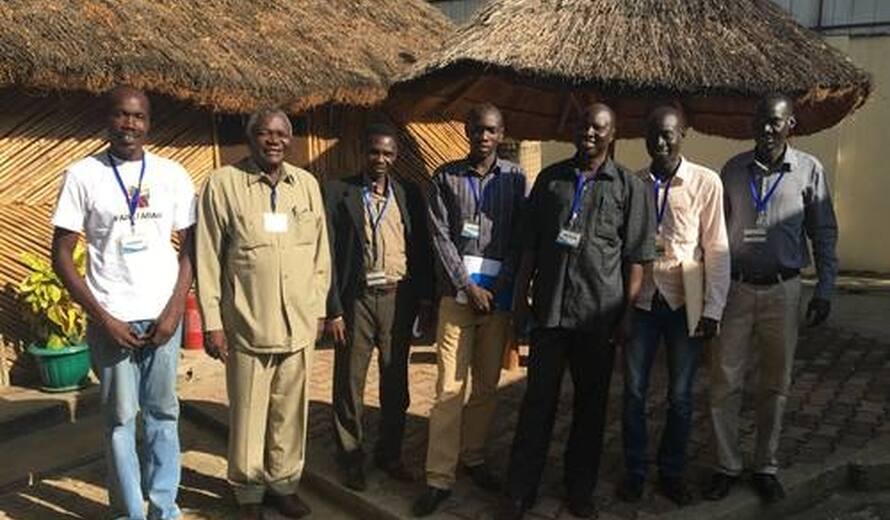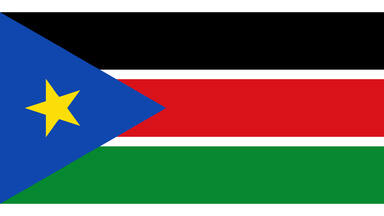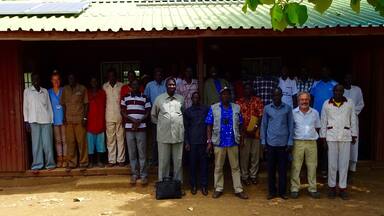South Sudan moves closer to finalizing its World Heritage Tentative List
Since South Sudan’s ratification of the UNESCO World Heritage Convention in March 2016, UNESCO has been working closely with the Government of the Republic of South Sudan to support the development of the newest African country’s first Tentative List of potential World Heritage sites.
A ‘Tentative List’ is a detailed inventory of natural, cultural or mixed (both natural and cultural) heritage sites, highlighting their potential ‘Outstanding Universal Value’, which a State Party may consider nominating to the UNESCO World Heritage List in the coming years.
Following an introductory national training workshop on preparing a World Heritage Tentative List, which was held in Juba from 8 to 13 June 2016, UNESCO had planned a national consultation and validation workshop in mid-September with a wider group of stakeholders, including the media and community representatives living in or around the heritage sites being considered for Tentative Listing. However, due to the conflict that erupted on 7 July, the security situation no longer allowed for the organization of the workshop in Juba.
Despite these challenges, the national team of representatives from the Ministry of Culture, Youth and Sport and the Ministry of Wildlife Conservation and Tourism, continued to work on preparing the inventory with support from two international experts in natural and cultural heritage. By mid-September, they had begun preparing the Tentative List Submission Forms for six sites: three cultural properties, two natural properties and one mixed-site.
On 30 September 2016, UNESCO mobilized senior representatives of the World Heritage Advisory Bodies (the International Union for the Conservation of Nature-IUCN; the International Council on Monuments and Sites-ICOMOS; the International Centre for the Study of the Preservation and Restoration of Cultural Property-ICCROM) as well as the Director of the African World Heritage Fund-AWHF to participate in a virtual consultation with the national team in Juba responsible for developing the Tentative List Submission Forms for natural and cultural heritage sites in South Sudan.
This ‘Skype’ meeting enabled an early dialogue between the State Party of South Sudan and the World Heritage Advisory Bodies in what is known as the ‘Upstream Process’, which was launched in 2008 in support of the 1994 Global Strategy for a representative, balanced and credible World Heritage List to find options for improving and strengthening the current World Heritage nomination process.
South Sudan boasts a diverse array of natural and cultural heritage sites, which range from the second largest wildlife migration route in the world to wetlands rich in biodiversity, sacred mountains and slave route sites. The meeting provided a unique opportunity for the national team to receive feedback from the leading international experts in World Heritage on the strengths and weaknesses of their Tentative List Submission Forms, and advise on how to improve them.
Following this virtual meeting, the national teams will revise the forms prior to their submission to the Government of the Republic of South Sudan for final approval, which will be followed by the official submission to the World Heritage Centre for inclusion on South Sudan’s World Heritage Tentative List.
Mr. Edward Jubara, Director of Antiquities, who participated in both workshops, noted that “the Ministry of Culture, Youth and Sports recognizes the potential of World Heritage status to bring considerable benefits to South Sudan by promoting national and local pride in the natural and cultural heritage within its borders.” He further stated that “World Heritage status promotes international interest in the conservation of heritage sites and draws tourists from around the world, which could help South Sudan develop a sustainable tourism industry based on the conservation and promotion of its natural and cultural heritage sites.”
Raising awareness about the rich natural and cultural heritage sites in South Sudan is also an opportunity to show another face of South Sudan in stark contrast to the images of conflict and poverty often reported in international media. For a glimpse of some of South Sudan’s natural heritage wonders, see this report from Al Jazeera:
https://www.youtube.com/watch?v=I2shG0NEvWM.
As a next step, UNESCO will work with local media to promote information about the World Heritage Convention and the responsibilities and benefits of World Heritage Listing. Through this, UNESCO will encourage community consultation from the general public about their perceptions of the potential sites and the importance they can have for the areas in which they are located, and for South Sudan as a whole.
“The representatives of the National Team have remained committed to the Tentative List process since its inception,” said Karalyn Monteil, Programme Specialist for Culture in the UNESCO Regional Office for Eastern Africa. “Their continued active involvement is instrumental in ensuring the successful finalization of South Sudan’s Tentative List,” she added.
UNESCO is also supporting the national authorities with efforts to secure additional funding for researching and recognizing the potential World Heritage values of South Sudan’s natural and cultural heritage sites.
For more information about the World Heritage Convention and capacity building activities for the Africa region, please see https://whc.unesco.org/en/africa/.



